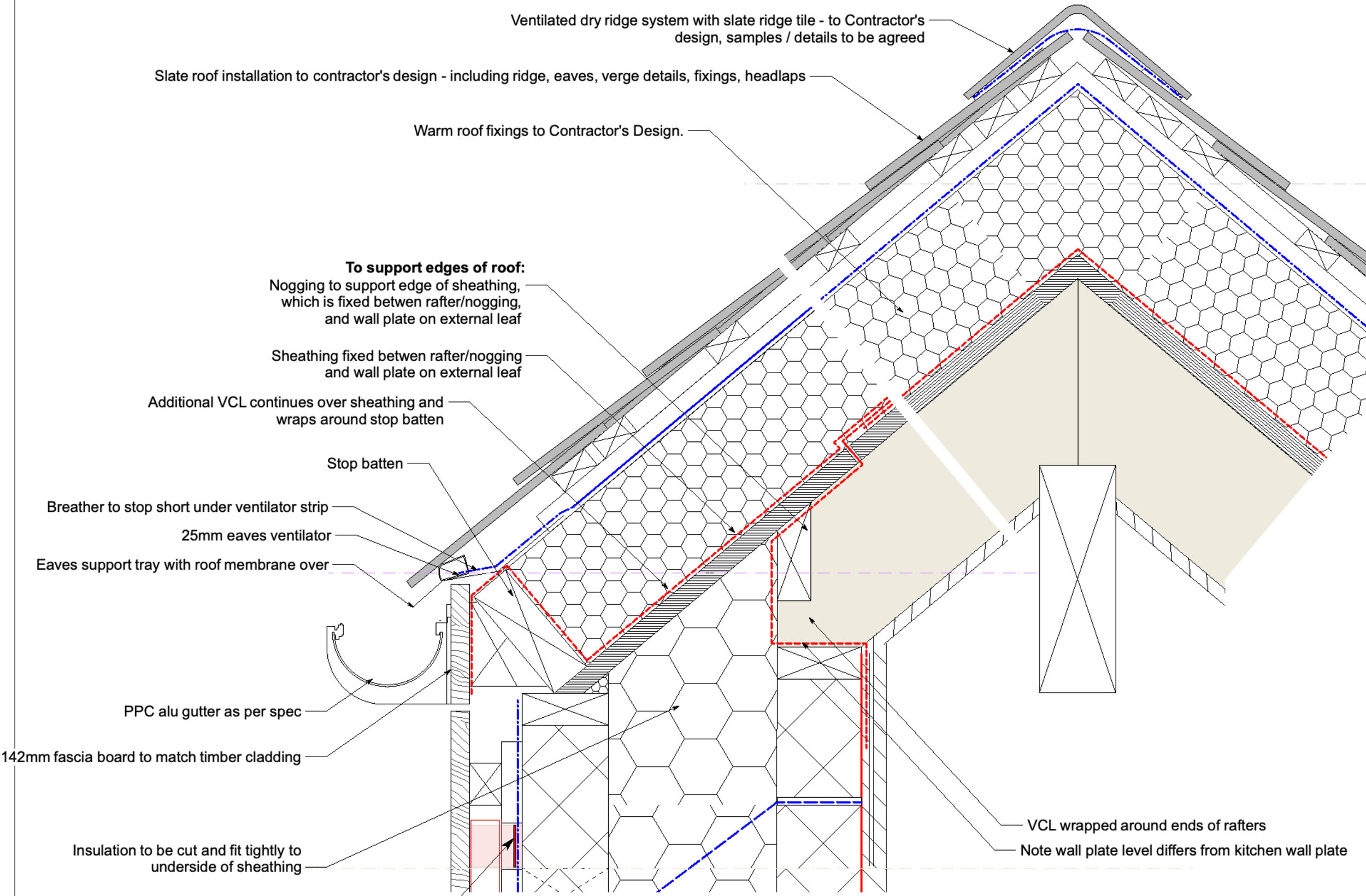Airtightness and breathability
by Julian Woods
Make it Airtight
An important principle in new construction is airtightness, that is, minimising the amount of air able to travel through the external envelope of the building. Having good airtightness gives a much better thermal performance as less heat is lost through uncontrolled ventilation (known as infiltration). This is especially true in buildings with high levels of insulation such as Passivhaus buildings.
There are minimum standards for airtightness set by building control, but all sustainable building standards will far exceed these.
Being airtight, however, doesn’t mean a house isn’t ventilated. Either by natural means - opening windows, trickle vents or louvres - or mechanically - extract ventilation, positive input or MVHR. The difference is being able to control how and when air comes in and out the building, rather than it leaking out all the time.
Make it Breathable
Whilst airtightness refers to movement of air through the construction, perhaps confusingly, breathability refers to the ability for moisture or water vapour to move through the construction.
Generally it is best for everything above ground level to be breathable, which means any moisture that does find its way into the construction is able to dry out, and stops any build up of dampness over time.
This is especially important when using natural materials - which we always try to specify as the most sustainable and healthy option.
There are several different layers in construction to stop the movement of water that need to be applied in different scenarios. Principally to protect the construction from damp or condensation, as well as making the building a healthier place to be by preventing mould and damp.
Damp Proof Membrane or Damp Proof Coursing - waterproof layer stops moisture moving from one layer to another through contact
Breather membrane - allows water vapour to pass out of the construction, whilst preventing moisture or direct water from entering
Vapour Control Layer - stops water vapour in the air from moving into the construction. Can also act as an airtightness layer. This can be a board or a membrane.
Achieving good airtightness with a breathable construction and properly detailed membranes is critical for an energy efficient, good quality house. It’s also important to get the ventilation strategy right - often MVHR becomes the best solution in new houses to recover heat lost through ventilation.

